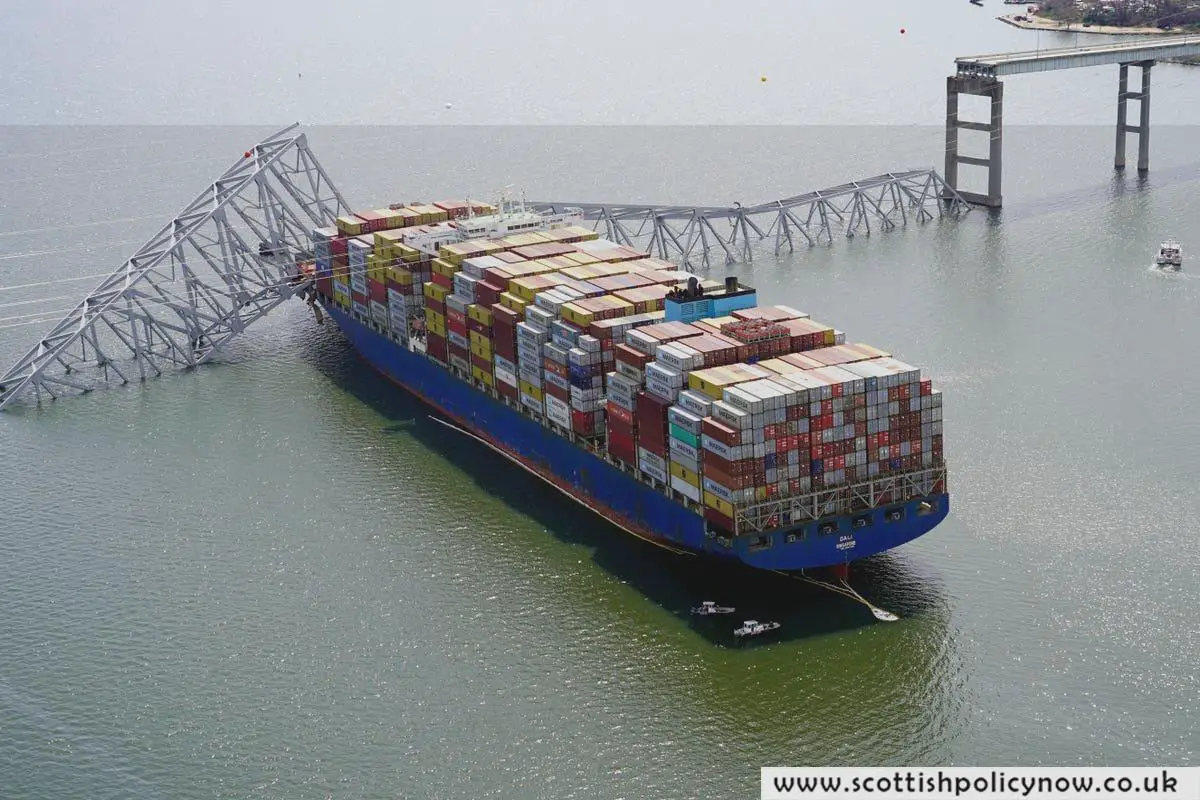When a colossal container ship collided with the San Francisco–Oakland Bay Bridge in 2007, the structure remarkably withstood the impact with no fatalities occurring aboard the vessel or on the roadway above.
This bridge was safeguarded by a buffering system constructed of concrete and assorted materials, specifically designed to absorb such collisions. This incident has sparked a debate: Would similar protective measures have averted the collapse of Baltimore’s Francis Scott Key Bridge?
A number of specialists believe so.

Sherif El-Tawil, a professor of engineering at the University of Michigan, points out several precautions that “would’ve been critical” if they had been in effect on Tuesday morning when a freighter rammed into the bridge, causing it to tumble.
El-Tawil suggests that a fendering system might have lessened the impact from the 985-foot vessel. Alternately, pilings secured deep into the riverbed, referred to as dolphins, might have redirected the container ship Dali away from the bridge. Additionally, protective islands built of rocks or concrete encircling the bridge’s base could have served as a barrier.
“The force from such a massive ship may seem insurmountable,” El-Tawil noted. “However, I’m convinced that proper design, whether it be a safeguard or the bridge’s very own robust pillars, can counteract it.”
In light of this catastrophe, which resulted in the death of six workers, these protective strategies are now under scrutiny. It seems the 47-year-old Key Bridge lacked the modern defenses commonly found in newer constructions.
This event has sparked a debate on the expenditure American taxpayers are ready to allocate for protection against such infrequent yet catastrophic events. And opinions are split on whether the Key Bridge could have been spared.
“There’s considerable discussion among engineers on whether any of these features would’ve played a role in such a scenario,” said Pete Buttigieg, the U.S. Transportation Secretary, during a press briefing at the White House on Wednesday.
“The sheer magnitude of the collision is hard to convey,” Buttigieg remarked. “It’s comparable not just to a building, but to an entire block—a colossal 100,000 tons colliding with the pier in one go.”
Buttigieg didn’t directly respond to whether preventive measures should be implemented for the nation’s bridges. However, he pointed out that many bridges have been engineered with improved collision protection since the 1980 catastrophe when a freighter struck Florida’s Sunshine Skyway Bridge, resulting in 35 deaths.
The Key Bridge in Baltimore was inaugurated in 1977, three years before that calamity, during an era when cargo ships were significantly smaller. In recent times, ships have been supersized to transport more containers, reducing shipping expenses. To accommodate these behemoths, ports in Georgia and South Carolina have deepened their channels, and parts of a bridge in New York City were raised to allow access for larger vessels.
The Tampa Skyway Bridge disaster, where 35 perished, instigated a shift in design ethos in the early ’80s, explained Mark Luther, an oceanography professor at the University of South Florida and head of the USF Center for Maritime and Port Studies.
With protective rock islands and stout cylindrical piers guarding its primary supports, the newly constructed Skyway Bridge was designed to make it “very hard for a ship to hit any part of the bridge and cause its collapse,” stated Luther.
“To retrofit an old bridge like the Key Bridge with these modern features would be prohibitively costly,” Luther said. “To my understanding, nobody’s done it. We’ve just had to live with the risks associated with the ’70s-era design.”
Roberto Leon, a Virginia Tech engineering professor, acknowledges that today’s technology can shield bridges from collisions with massive ships such as the Dali.
Yet, he cautions that there is always a balance between cost and risk for governments. Even if the Key Bridge were modernized with current safety features, it doesn’t guarantee it could withstand extreme events.
“This was a tremendous force,” he remarked about the ship that hit the Key Bridge. “If the protective system was engineered for that kind of load, I believe it would have saved the bridge. But the real dilemma is: Would you engineer for such an immense load? Because as the load gets bigger, so does the cost.”







